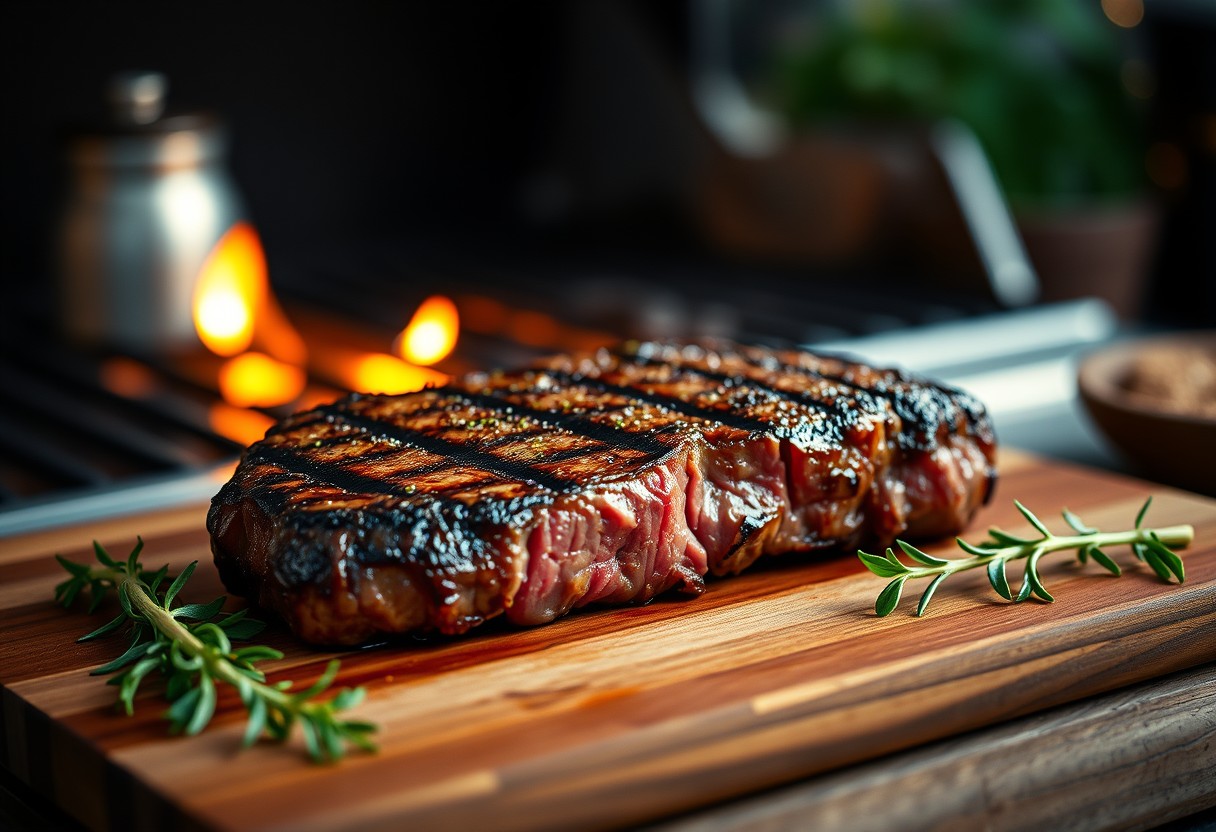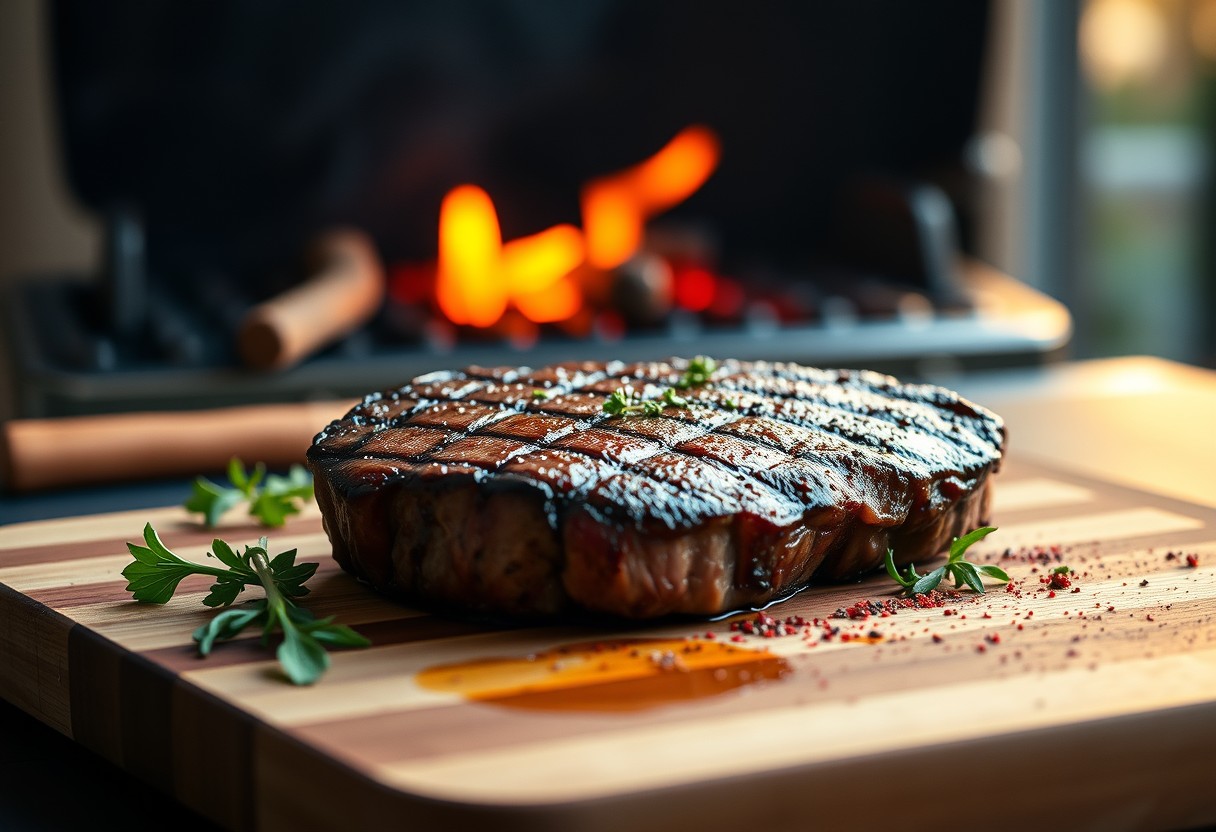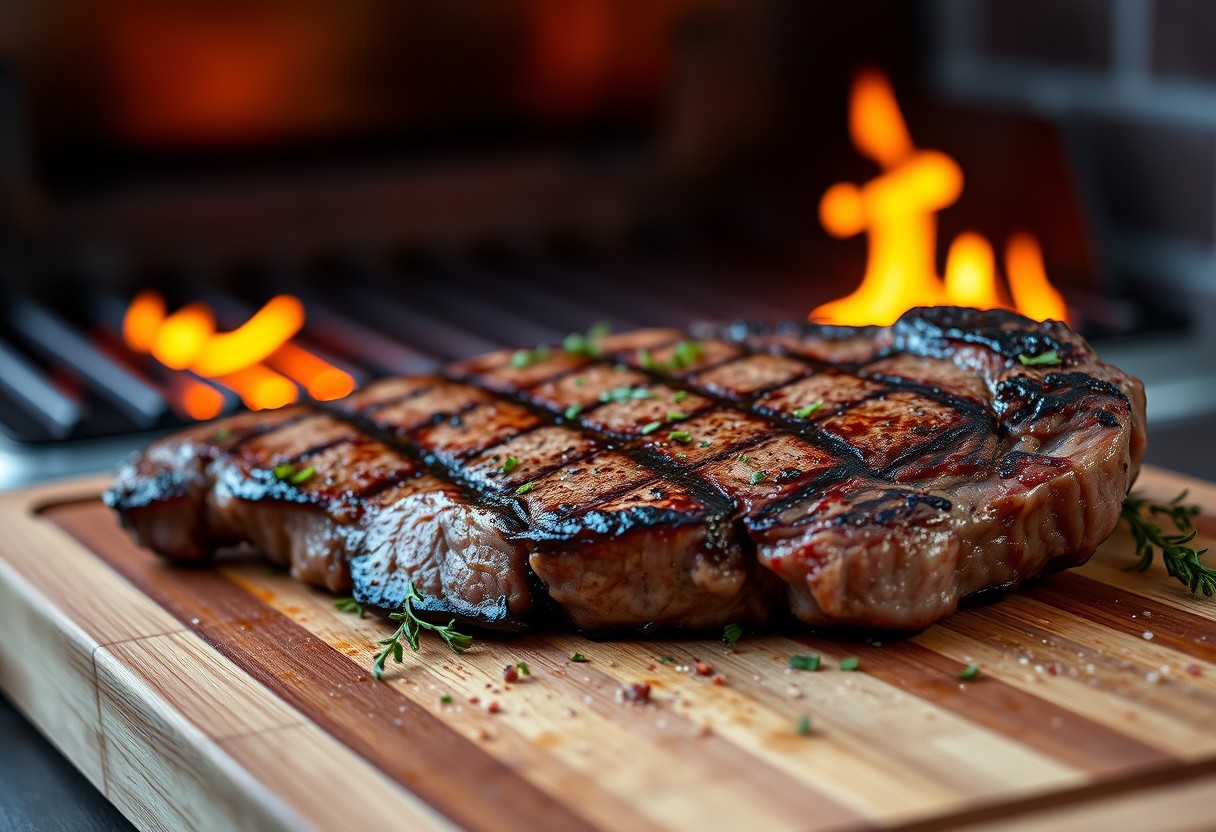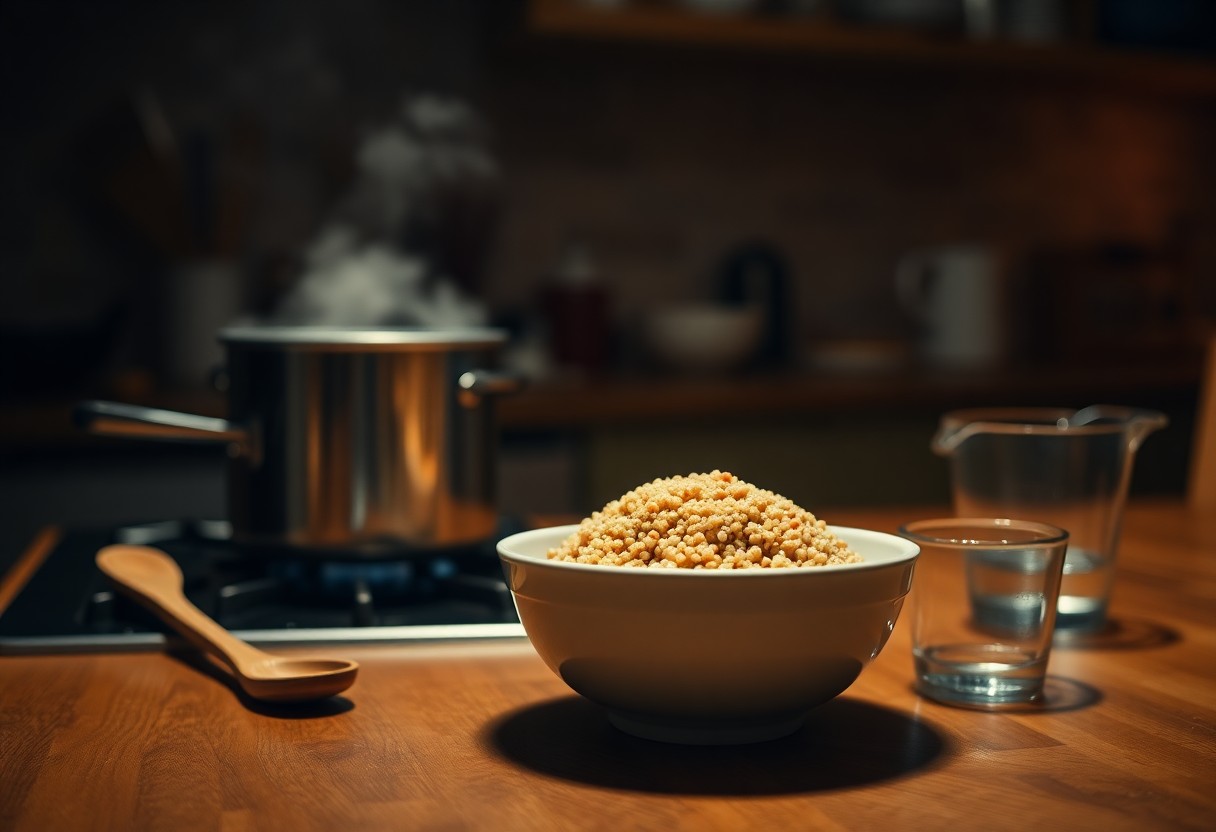Over the years, perfecting your steak grilling technique can elevate your culinary skills and impress your friends and family. Understanding how to achieve your desired doneness is crucial in delivering a delicious, juicy steak that meets your unique taste. In this post, we’ll walk you through imperative tips and methods that ensure your steak reaches the perfect state, whether you prefer it rare, medium, or well done. Let’s dive in and transform your grilling experience for the better!

Key Takeaways:
- Understanding Doneness Levels: Familiarize yourself with the different levels of steak doneness—rare, medium-rare, medium, medium-well, and well-done—to achieve your preferred taste and texture.
- Using a Meat Thermometer: Invest in a reliable meat thermometer to ensure accurate internal temperature readings, which is vital for achieving the desired doneness without overcooking.
- Resting the Steak: Allow the steak to rest for a few minutes after grilling; this helps redistribute the juices and enhances the flavor and tenderness of the meat.

Understanding Steak Cuts
Before entering into the various techniques for grilling steaks, it’s crucial to understand the types of cuts you’ll encounter. Different cuts come from various parts of the cow, and each cut has its own unique flavor, texture, and optimal grilling methods. Familiarizing yourself with these cuts will not only help you choose the best options for your grilling needs, but it will also enhance your overall cooking experience.
Popular Cuts for Grilling
Popular steak cuts for grilling include ribeye, sirloin, filet mignon, and T-bone, among others. Ribeye is celebrated for its rich marbling, which gives it a juicy flavor that’s hard to beat. Sirloin is a more affordable option that still packs a decent amount of flavor and is perfect for those who appreciate a leaner cut. For a melt-in-your-mouth experience, filet mignon is your go-to, although it tends to be pricier. Lastly, T-bone combines the best of both worlds with a tenderloin on one side and strip steak on the other, making it a favorite for those who love variety.
Each of these cuts has its own ideal cooking times and temperatures, so knowing what you’re working with is key to achieving that perfect doneness you crave. As you explore different cuts, consider your flavor preferences and cooking style to find the ideal match for your next grilling session.
Choosing the Right Thickness
Assuming you’ve now familiarized yourself with the popular cuts, the next step is understanding the importance of thickness in your steaks. The thickness of your steak plays a significant role in the cooking process and can influence your experience when it comes to doneness. Generally speaking, a thickness of 1.5 to 2 inches is ideal for grilling steaks, as this allows for a beautiful sear on the outside while ensuring the inside reaches the desired level of doneness.
Choosing the right thickness not only affects cooking time but also your ability to achieve the perfect crust and texture. Thicker cuts generally need lower heat for a longer period to cook evenly, while thinner cuts may require higher heat to create that nice sear without overcooking the inside. Pay attention to these details, as they can make a significant difference in your grilling results.
Cuts will often dictate how well your steak cooks, and understanding the thickness can help you manage your heat levels more effectively. If you opt for a thicker steak, you might also consider indirect grilling methods to ensure that heat penetrates evenly without burning the outer crust. Conversely, thinner cuts may require immediate attention to avoid overcooking. Keep these factors in mind as you explore different cuts and tailor your grilling strategies accordingly.
Factors Influencing Doneness
It’s important to understand the various factors that influence the doneness of grilled steak. Achieving the perfect level of doneness is not solely about cooking time; several elements come into play that can significantly impact your results. Below are some of the key factors to consider:
- Meat Temperature
- Resting Time
- Grill Temperature Control
This foundational knowledge will help you master your grilling skills.
Meat Temperature and Its Importance
One of the most critical aspects of achieving your desired steak doneness is understanding meat temperature. Each level of doneness is associated with a specific internal temperature, which you must aim to reach when grilling. Here’s a handy reference table for steak internal temperatures:
| Level of Doneness | Internal Temperature (°F) |
|---|---|
| Rare | 125°F |
| Medium Rare | 135°F |
| Medium | 145°F |
| Medium Well | 155°F |
| Well Done | 160°F and above |
The importance of monitoring your steak’s internal temperature cannot be overstated, as it ensures you achieve the perfect tenderness and flavor characteristic of your preferred doneness.
Resting Time and Its Impact
If you want to further enhance the juiciness and flavor of your steak, you must not overlook the importance of resting time. When a steak is cooked, the juices inside are pushed towards the surface. Allowing your steak to rest for a few minutes after grilling enables the juices to redistribute throughout the meat, improving both flavor and texture. Aim for a resting time of about 5-10 minutes, depending on the size of the steak.
This crucial step in the cooking process not only makes your steak succulent but also helps in maintaining its temperature, resulting in a more enjoyable dining experience. Bear in mind, impatience can lead to lose those delightful juices you worked hard to keep in during cooking!
Grill Temperature Control
Resting is also linked closely to your ability to control grill temperature. By maintaining steady heat, you manage how quickly your steak cooks, allowing for finer adjustments as needed. A grill that’s too hot can quickly scorch the outside while leaving the inside undercooked, while a low grill may not bring the inner temperature up to your desired doneness. Here’s a breakdown to better understand how grill temperature affects your steak:
| Grill Temperature (°F) | Effect on Steak Doneness |
|---|---|
| High (450-500°F) | Creates a nice crust quickly, but may undercook the interior if not monitored |
| Medium (350-450°F) | Ideal for achieving balanced cook; great for thicker cuts |
| Low (250-350°F) | Best for slow cooking; may lead to dry steaks if cooked too long |
Understanding how to control the temperature of your grill allows you to experiment with different cooking methods, ensuring that each steak is perfectly cooked to your liking. Maintaining the right grill temperature is key to achieving your desired doneness, so keep an eye on your gauges and adjust as necessary.
This combination of factors—knowing the ideal meat temperature, allowing for proper resting time, and mastering grill temperature control—will put you well on your way to grilling the perfect steak each time. As you gain experience, these concepts will become second nature and enhance your enjoyment of each culinary endeavor.
Essential Tools for Grilling
Your grilling experience can be significantly enhanced with the right tools at your disposal. Investing in high-quality equipment not only aids in achieving the perfect steak doneness but also makes the grilling process much more enjoyable. From thermometers to utensils, each tool serves a specific purpose that contributes to your overall grilling success.
Thermometers: Types and Usage
Usage of thermometers is crucial in achieving the ideal doneness for your steak. There are several types of thermometers available, each designed to help you measure the internal temperature of your meat accurately. Here is a breakdown of the most common types:
| Type | Usage |
|---|---|
| Instant-Read Thermometers | Provide quick temperature readings and are ideal for checking doneness. |
| Probe Thermometers | Stay in the meat while cooking, allowing you to monitor the temperature continuously. |
| Infrared Thermometers | Measure surface temperatures without direct contact and are great for checking grill temperatures. |
| Bluetooth/Wi-Fi Thermometers | Connect to your smart device, providing real-time updates on the meat’s temperature from a distance. |
| Thermometer Forks | Double as grilling forks and measure temperature, but may be less accurate. |
After selecting the right thermometer, ensure you understand how to use it correctly for optimal results. Insert the probe into the thickest part of the steak without touching bone or fat for the most accurate readings.
Grilling Utensils You Need
There’s a plethora of grilling utensils that can elevate your barbecue game, making it easier to grill the perfect steak. Essential items include a sturdy set of tongs, a spatula, a basting brush, and grill gloves. These tools not only provide safety but also enhance your control while handling the steak on the grill.
Need to know more? Having a long-handled basting brush is invaluable for applying marinades and sauces without getting too close to the heat. A quality set of tongs allows you to flip or move the steak effortlessly while preventing unwanted piercings that could release flavorful juices. Overall, investing in quality grilling utensils ensures your grilling experience is both safe and efficient.
How to Prepare Your Steak
Despite your experience level, preparing your steak properly is crucial for achieving that perfect doneness. There are several necessary steps you should undertake before heading to the grill, including marinating and seasoning. These elements will not only enhance the flavor of your steak but also contribute to a deliciously tender texture, setting the stage for a remarkable grilling experience.
Marinades: How to Make and Apply
Make your marinade by combining ingredients that will complement the natural flavors of your steak. A good marinade typically includes an acid (such as vinegar or citrus juice) to help tenderize the meat, oil to add moisture, and a mix of herbs and spices for flavor. Allow your steak to soak in the marinade for at least 30 minutes, though several hours can yield even better results. Make sure to cover it and place it in the refrigerator for safety.
When applying your marinade, remember that not all cuts of steak require the same length of time to marinate. Thicker cuts like ribeye or chuck benefit from longer marination, while thinner cuts such as flank or skirt steak require less time. To avoid overpowering the natural flavors of your steak, aim for a balance in your marinade. If you feel adventurous, you can even experiment with regional flavors to give your steak a unique flair.
Seasoning Tips for Maximum Flavor
An necessary part of preparing your steak is the seasoning, which is typically best accomplished just before grilling. Simple seasoning with salt and pepper can go a long way in enhancing the meat’s taste and allowing the natural flavors to shine through. You might consider using kosher salt for its larger grain size, which helps to retain moisture and create a delicious crust during cooking.
- Apply seasoning generously on both sides of the steak
- Try to season at least 30 minutes before grilling for a better flavor deep within the meat
- Consider adding garlic powder or onion powder for additional depth
- Use fresh herbs or spice blends to elevate flavors
Understanding the science behind seasoning can make your steak even better. Salt not only enhances flavor but also draws moisture to the surface, creating a delectable crust when grilled. The timing of your seasoning matters—salting your steak too early can draw moisture out, resulting in a drier cooking experience, while salting just before grilling allows for that beautiful crust to form on the outside while keeping the inside juicy.
- Experiment with different seasoning options to personalize your flavor profile
- Layer flavors with a combination of dry and wet seasonings
- Don’t forget to let your steak rest after grilling to allow flavors to meld
Perceiving the aromatic and flavorful potential of your steak starts from the very moment you begin preparing it. With the right techniques in marinating and seasoning, you will be well on your way to a perfectly grilled steak that showcases its rich taste and texture.
Grilling Techniques
To achieve the ideal steak doneness, mastering your grilling techniques is important. Whether you prefer the quick sear of high heat or a slower approach to enhance the flavors, understanding the methods available can take your grilling to the next level. Familiarizing yourself with direct and indirect heat, for example, can significantly impact the outcome of your steak.
Direct vs. Indirect Heat
Some of the best steak grilling methods involve utilizing direct and indirect heat effectively. Direct heat means that your steak is placed directly over the flame or heat source, creating a beautiful sear and crust while quickly cooking the exterior. This technique is perfect for thinner cuts of steak and allows you to control the caramelization process, creating an excellent flavor profile.
On the other hand, indirect heat involves cooking the steak away from the direct flame. This method is ideal for thicker cuts that need more time to cook through without burning the outside. By using indirect heat, you can maintain a steady temperature, allowing the juices to redistribute and the steak to reach your desired level of doneness more evenly.
Using a Two-Zone Cooking Method
An effective way to combine both methods is by using a two-zone cooking setup. In this configuration, you designate one side of your grill for direct heat and the other for indirect heat. Start cooking your steak on the direct heat side to achieve that mouthwatering sear, and then transfer it to the indirect heat side to finish cooking to your preferred doneness without risk of charring.
Understanding how to utilize the two-zone cooking method is vital for achieving the perfect steak. By monitoring the internal temperature closely, you can ensure even cooking, especially for larger cuts that require a longer time on the grill. This technique allows for versatility in your grilling approach, enabling you to experiment with various cooking times and heat levels until you discover the method that perfectly suits your style.
Tips for Flipping and Handling the Steak
Grilling your steak involves precision in handling and flipping it at the right moments. Remember to keep the following tips in mind to ensure you don’t compromise its integrity during the cooking process:
- Only flip your steak once to preserve juices.
- Use tongs instead of a fork to avoid piercing the meat.
- Let the steak rest before cutting to retain its flavor.
Thou shall maintain constant attention during the grilling process to achieve perfectly cooked steak.
For instance, mastering the art of flipping your steak correctly can enhance the overall cooking experience. The key is to allow your steak to form a crust before attempting to turn it. This takes about 4-5 minutes for thicker cuts on direct heat, providing a delicious caramelization layer that enhances flavor. Following these guidelines will not only improve the doneness of your steak but also elevate the entire grilling experience.
- Keep the lid closed as much as possible to retain warmth.
- Avoid excessive flipping to allow proper heat distribution.
- Check for doneness using a meat thermometer for precision.
Thou shall not underestimate the importance of effective handling techniques to ensure a well-cooked steak.
Achieving Ideal Doneness
Once again, the key to mastering the art of grilling steak lies in achieving the ideal level of doneness. The preferences for steak doneness can vary widely among individuals, so understanding the different doneness levels will empower you to cook the perfect steak for yourself and your guests. This section will provide you with crucial information on the temperature ranges for different levels of doneness, visual cues to look for while grilling, and tips on how to use a meat thermometer correctly.
Temperature Ranges for Different Levels
To effectively gauge the doneness of your steak, it’s important to know the precise temperature ranges for each level. Here’s a handy reference:
| Doneness Level | Internal Temperature (°F) |
|---|---|
| Rare | 120-125 |
| Medium Rare | 130-135 |
| Medium | 140-145 |
| Medium Well | 150-155 |
| Well Done | 160 and above |
Visual Cues for Doneness
An crucial part of determining your steak’s doneness is knowing how to read its visual cues. As your steak cooks, the surface will change color and texture. For example, a rare steak will have a bright red and cool center, while a well-done steak will appear brownish throughout. A good rule of thumb is to assess the juices that escape from the steak; clear juices indicate doneness closer to well-done, while red or pink juices signify less cooked levels. The way the steak responds to pressure can also provide clues; a soft steak generally indicates it’s rare, while a firmer touch signifies it has cooked further.
A valuable tip is to remember that as meat cooks, it also continues to cook from residual heat even after being removed from the grill. This phenomenon, known as carry-over cooking, means you should remove your steak from the heat when it is a few degrees below your target temperature. This technique ensures that you achieve the intended doneness by the time you serve.
How to Use a Meat Thermometer Correctly
Assuming you want to master your grilling skills, utilizing a meat thermometer is one of the most reliable methods to ensure accurate doneness. Start by inserting the thermometer into the thickest part of the steak without touching any bones or grill grates, as they can affect the temperature reading. It’s best to check the temperature towards the end of the cooking time, allowing you to adjust as necessary. If you’re cooking multiple steaks, remember that larger cuts of meat will take longer to cook than smaller ones, so check each piece individually.
Additionally, when using a meat thermometer, you should remember the importance of calibrating it beforehand to guarantee accuracy. Some thermometers may need adjustments over time due to temperature fluctuations or wear. Checking its calibration with boiling water, which should read 212°F, and ice water, which should read 32°F, can help verify that you’re getting the correct readings when grilling your perfect steak.
Ideal doneness is not just about temperature; it’s also about your personal preference and experience. Understanding these factors allows you to tailor your grilling techniques to create steaks that consistently meet your expectations. So, arm yourself with this knowledge, and get ready to impress your family and friends with perfectly cooked steaks every time!
To Wrap Up
From above, it’s clear that achieving the ideal doneness for your steak requires a combination of technique, attention to detail, and knowledge of your grill. As you’ve learned, utilizing a reliable meat thermometer, understanding the nuances of resting time, and leveraging the impact of carryover cooking are pivotal in mastering this culinary skill. Recall, doneness preferences may vary among your guests, so having a foundational comprehension of the internal temperature ranges for rare, medium, and well-done steaks can help you cater to everyone’s taste.
Moreover, investing time in practicing your grilling techniques will ultimately enhance your confidence and lead to delicious results that you can be proud of. By refining your grilling skills and following these guidelines, you will not only impress your family and friends but also elevate your overall culinary expertise. Embrace the grilling process, and with each steak, you’ll get closer to achieving the perfect doneness every time.





Leave a Reply